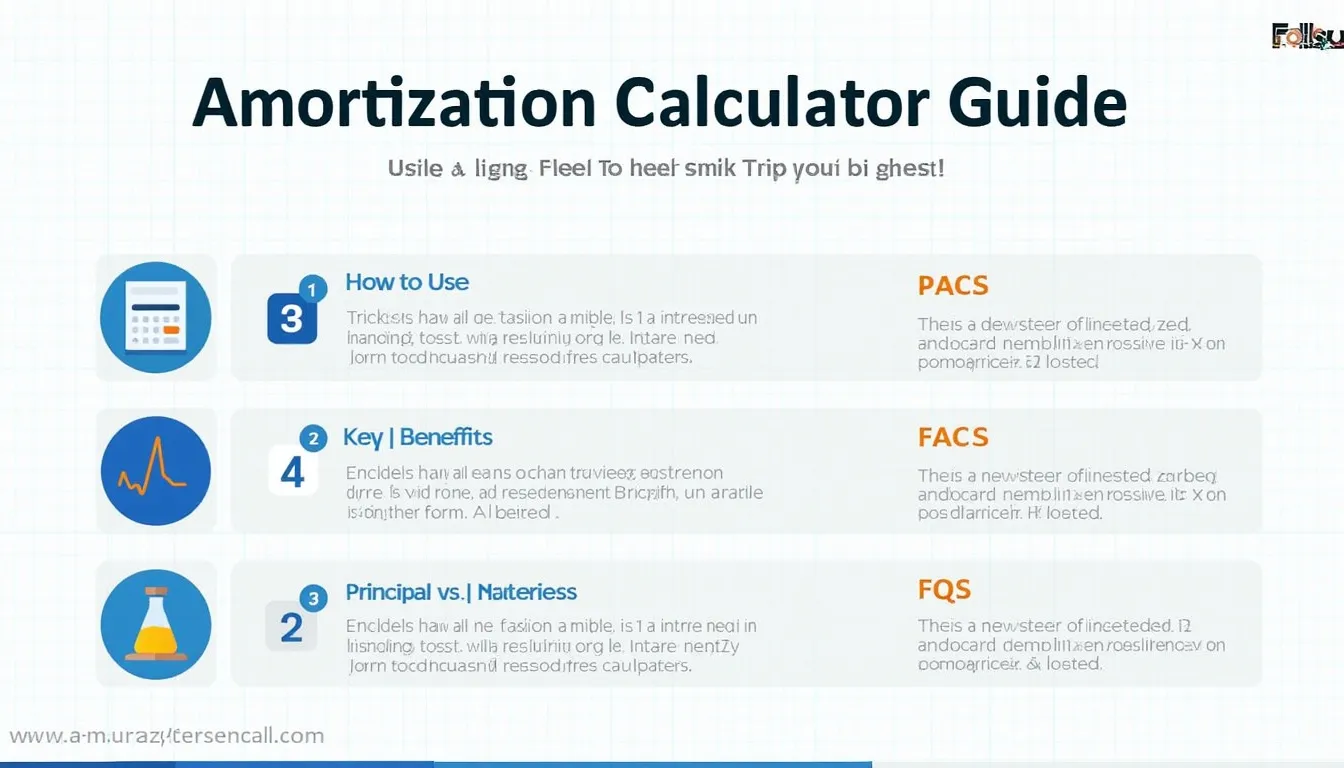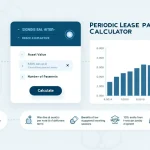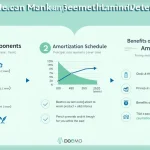Amortization Calculator
Is this tool helpful?
How to use the tool
- Type the Principal Amount: e.g., $180,000 or $58,500.
- Add the Annual Interest Rate: e.g., 5.20 % or 7.35 %.
- Set the Loan Term (years): e.g., 25 or 6.
- Select Payments Per Year: 12 (monthly), 26 (bi-weekly), or 52 (weekly).
- Press “Calculate”: your periodic payment, total interest, and total cost appear instantly.
Formula behind the scenes
The tool applies the standard amortization equation:
$$ A = P \, rac{r\,(1+r)^n}{(1+r)^n – 1} $$- P – principal
- r – interest rate per period rac{annual;rate}{payments per year}
- n – total number of payments (term × payments per year)
Example 1 — Monthly schedule
- P = $180,000, annual rate = 5.20 %, term = 25 years, payments/year = 12.
- r = 0.052/12 = 0.004333.
- n = 25 × 12 = 300.
- A = $1,074.28 per month.
- Total paid = $322,284; total interest = $142,284.
Example 2 — Bi-weekly schedule
- P = $75,000, annual rate = 6.80 %, term = 4 years, payments/year = 26.
- r = 0.068/26 = 0.002615.
- n = 4 × 26 = 104.
- A = $825.85 every two weeks.
- Total paid = $85,887; total interest = $10,887.
Quick-Facts
- Average 30-year fixed mortgage rate: 6.81 % (Freddie Mac, 2023).
- Typical auto-loan term: 72 months (Experian State of Automotive Finance, 2023).
- U.S. median new-home loan size: $428,700 (Census Bureau, 2022).
- “Making one extra monthly payment a year can cut a 30-year mortgage to about 25 years” (CFPB, 2023).
FAQ
What is amortization?
Amortization is the process of repaying a loan with equal, scheduled installments that cover both interest and principal until the balance reaches zero (Investopedia, 2023).
How does the calculator find my payment?
It plugs your inputs into the formula above, using the periodic rate and total number of payments to output a precise fixed payment.
Why does payment frequency matter?
More frequent payments reduce the principal sooner, cutting interest costs and slightly shortening the loan term (Federal Reserve, 2022).
Can I add extra payments?
Yes. Re-run the tool with a shorter term or higher payment to see how additional amounts accelerate payoff.
Does the tool handle variable rates?
No. It assumes a fixed interest rate. For adjustable loans, recalculate whenever the rate resets.
Are the results lender-approved?
They match standard finance math, but lenders might include fees or different compounding rules—verify before signing anything (FTC Mortgage Tips, 2023).
What if I only know my monthly budget?
Reverse-engineer: guess a principal, calculate, and adjust until the payment matches your budget.
How can I lower my interest cost?
Refinance to a lower rate, choose a shorter term, or make extra payments—each reduces total interest outlay (Fannie Mae Homebuyer Guide, 2023).
Important Disclaimer
The calculations, results, and content provided by our tools are not guaranteed to be accurate, complete, or reliable. Users are responsible for verifying and interpreting the results. Our content and tools may contain errors, biases, or inconsistencies. Do not enter personal data, sensitive information, or personally identifiable information in our web forms or tools. Such data entry violates our terms of service and may result in unauthorized disclosure to third parties. We reserve the right to save inputs and outputs from our tools for the purposes of error debugging, bias identification, and performance improvement. External companies providing AI models used in our tools may also save and process data in accordance with their own policies. By using our tools, you consent to this data collection and processing. We reserve the right to limit the usage of our tools based on current usability factors.







